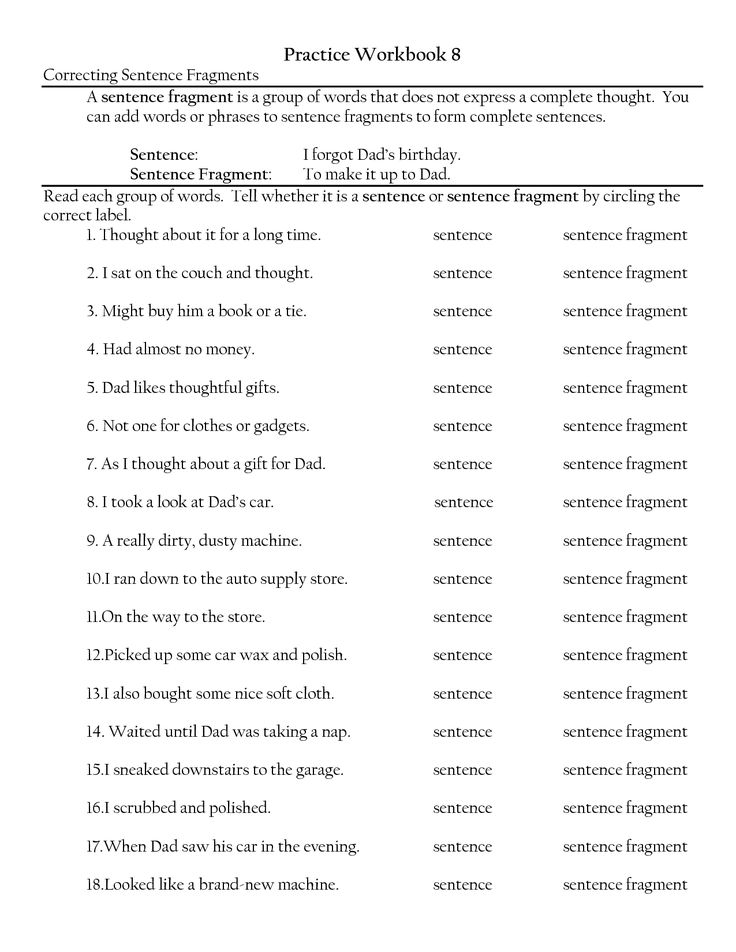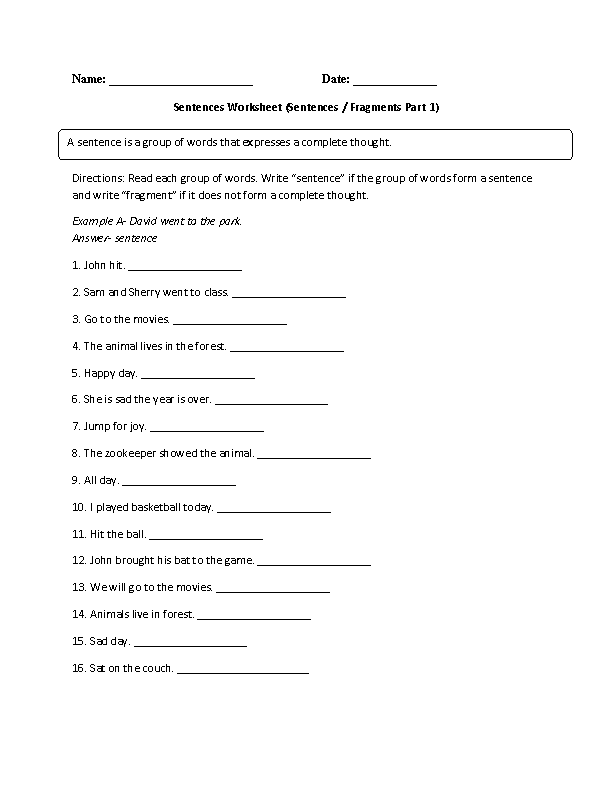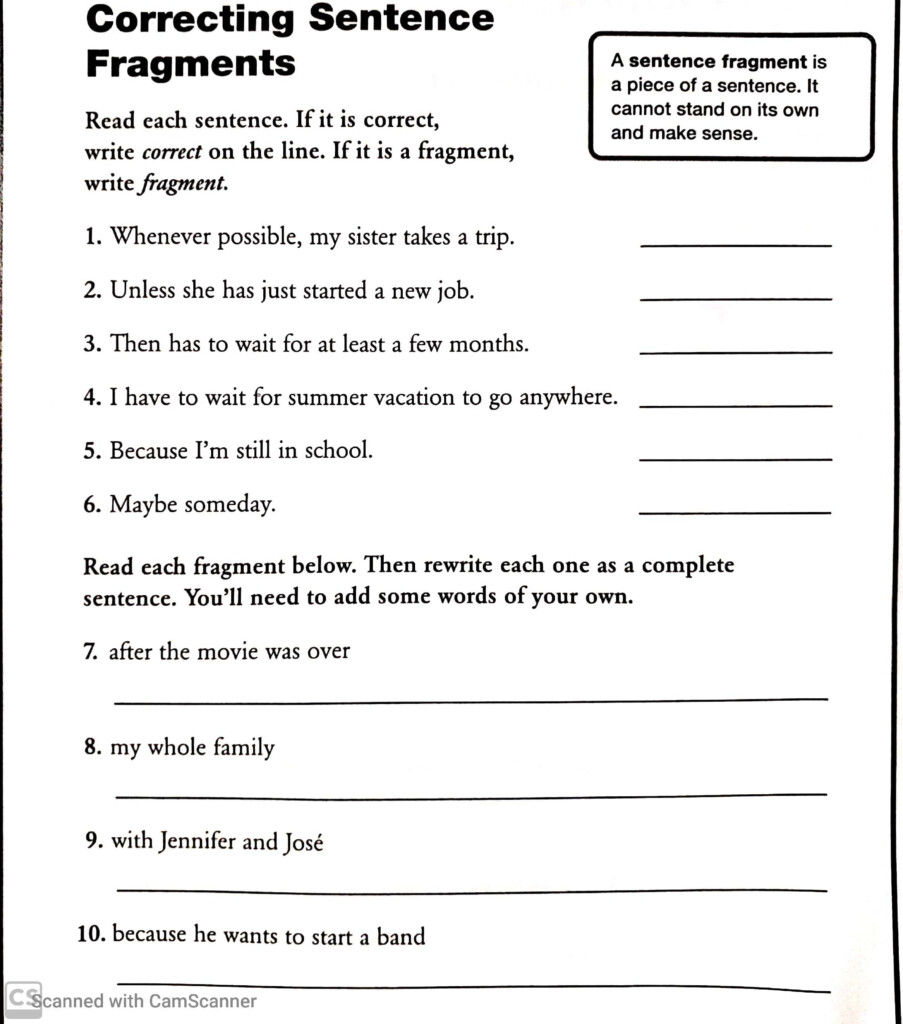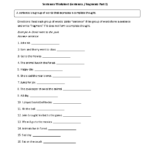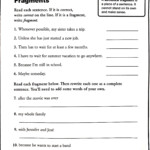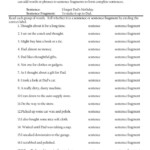Worksheet 2 Correcting Sentence Fragments Rule 8a Grade 7 – A compound sentence is composed of multiple independent clauses that are linked by a conjunction. These sentences are generally more readable and appealing to readers. You can use a 26-page worksheet pack for home or classroom use to practice writing these kinds of sentences. These worksheets can be used by both parents and teachers.
Compound sentences are linked by a conjunction
A coordinating conjunction is a combination of two or more independent clauses or phrases or words. Sometimes, it’s called a “comma splice”. A semicolon can replace a coordinating conjunction in writing. A coordinating conjunction does not necessarily make a sentence compound.
There are two types of basic compound sentences. The first is referred to as a complex sentence. It has at least one dependent clause and one independent clause. In this type of sentence, the conjunction joins two independent clauses and signals to the reader that both clauses are equally important.
A conjunction is used to connect two separate clauses in the second type of compound sentence. The conjunction connects the clauses, making the flow of the sentence more natural. While it is not required, it is common practice to separate independent clauses in a single sentence.
They can contain two or more separate clauses
A compound sentence is a sentence that consists of two or more independent clauses. The independent clause is a complete thought, while the dependent clause is a partial one. Because they depend on the independent clauses, dependent clauses are called dependent clauses. The dependent clauses are introduced by using a conjunction such as but or if to join the two clauses.
Compound sentences are common and are often found in school books you read for fun. You might hear, for example, the sentence “Kate doesn’t like watching cartoons because they are too loud.” She doesn’t like cartoons. Hence, she does not watch them. An independent clause and a dependent clause are different because they cannot be used as a whole sentence.
To form a compound sentence, use the coordinating conjunction but to connect the two clauses. This helps the reader to understand the meanings of the two clauses, and allows for a smooth flow. However, if you don’t use a coordinating conjunction, the sentence will read like a run-on.
They need dashes
You can use dashes to punctuate sentences. Contrary to brackets which can be confusing and confusing, dashes are able to separate two words. They serve two purposes: to emphasize additional information and separate words from the surrounding text. They can also be used to connect two ideas.
In a compound sentence, two or more independent clauses are connected by a comma or a coordinating conjunction. In a compound sentence, the dash represents the difference between the first and the second clause, and it can also indicate an interruption. Hyphens are not required for all compound words. Students can use the compound sentence worksheets to learn how to use them correctly.
These resources were created by teachers who are experienced to ensure that they are suitable for students. They are also updated to reflect the latest National Curriculum.
They can be used in any international curriculum
For students learning about compound sentences, worksheets on compound sentence can be a valuable resource. These types of sentences are often considered more appealing to readers. They are composed of two or more independent clauses that are joined together by subordinating conjunctions. These words connect independent clauses and help students to understand their relationship. Usually, the main clause contains the more important idea, while the subordinating clause introduces the less important idea.
Compound sentences are a great way to add variety to writing and express complex ideas. When writing these kinds of sentences, students should be careful about where the commas are placed. They should also proofread their work, especially long and complex sentences. This will help them understand the meaning of the sentences they write.
